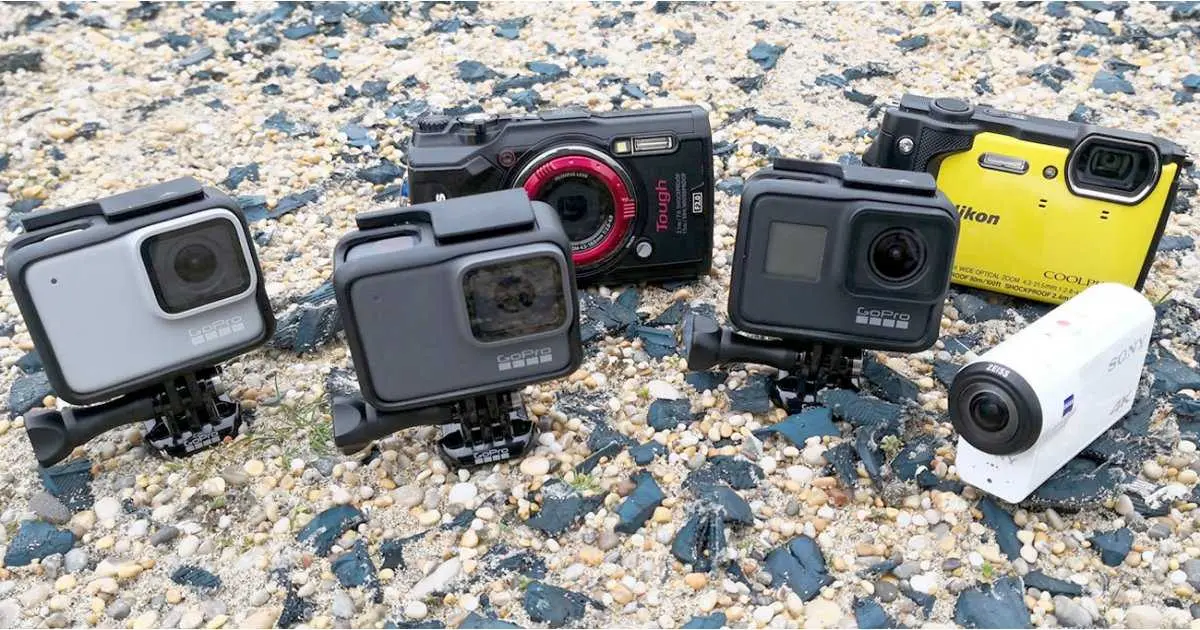Imagine capturing stunning moments in high IPAM cameras definition, all while seamlessly connecting to your devices.
Welcome to the world of, a game-changer in photography that brings innovation right to your fingertips. These cutting-edge gadgets are transforming how we document our lives, offering unparalleled convenience and quality.
Whether you’re an amateur photographer or a seasoned pro, exploring the features of an IPAM camera can elevate your creative journey. Let’s dive into what makes these remarkable devices stand out in today’s fast-paced digital landscape.
How do IPAM cameras work?
IPAM cameras, or Internet Protocol Addressable Cameras, utilize digital technology to capture high-quality images. They have a direct internet connection, making remote access and real-time streaming possible.
These cameras are equipped with sensors that convert light into digital signals. This process ensures stunning clarity and detail in every shot. After that, the data is compressed and sent via a network.
Users can control an IPAM camera via smartphones or computers. This flexibility permits adjustments in settings like zoom, focus, and exposure from virtually anywhere.
Integration with cloud storage means your photos are automatically saved online. You won’t have to worry about losing precious memories due to hardware failures.
IPAM cameras
IPAM cameras is the administration of DNS and DHCP, which are the network services that assign and resolve IP addresses to machines in a TCP/IP network. To put it simply, IPAM is a way to schedule, monitor, and control the Internet Protocol address space that is utilized within a network.
Typically, this work is carried out in conjunction with technologies like DNS and DHCP, but genuine IPAM will connect these services so that one is aware of the other changes (for instance DNS knowing of the IP address taken by a client via DHCP, and updating itself accordingly).
What is ipam?
IP address management is referred to as IPAM. This procedure aids network managers in organizing and controlling IP addresses across their whole networks.
Since IP addresses are necessary for every device connected to a network, it’s critical to carefully consider how to use them in order to make the most use possible of a limited amount of digital resources. As a result, proper IP management is a basic problem for a network of any scale.
Making sure that a system’s IP addressing space is effectively handled and kept current is the main goal of IP address management.
This covers setting up DNS and DHCP servers, writing DNS records (DNS zones), and capacity planning. Additionally, ensuring the accuracy of the assignable IP address repository.
Benefits of using an IPAM Camera
IPAM cameras offer a range of benefits that enhance photography experiences. First and foremost, they provide high-resolution images with incredible detail. This clarity makes each moment feel lifelike.
Another significant advantage is connectivity. With built-in Wi-Fi and Bluetooth, sharing photos becomes effortless. Users have the ability to instantaneously share their photos to cloud storage or social networking.
Flexibility is also key. IPAM cameras come equipped with various shooting modes and settings, allowing users to adapt quickly to different environments. These cameras work incredibly well in both bright and low light conditions. Additionally, many models feature advanced stabilization technology. This ensures smooth videos even in dynamic situations like sports events or family gatherings.
The user-friendly interfaces make learning easy for beginners while still offering advanced controls for seasoned photographers seeking greater creative expression.
Comparison between traditional cameras and IPAM camera
Traditional cameras have long been the go-to choice for photography enthusiasts. They rely heavily on film or digital sensors that capture images through a series of mechanical processes. This often results in high-quality photos but can also limit flexibility and instant sharing capabilities.
IPAM cameras, on the other hand, are designed with advanced technology that allows for immediate image processing and connectivity. With built-in Wi-Fi and cloud storage options, sharing moments becomes seamless.
Another key difference lies in usability. Traditional models may require extensive knowledge about settings like aperture and shutter speed to achieve desired outcomes. IPAM cameras typically offer user-friendly interfaces with automatic settings, making them accessible to everyone.
While traditional cameras excel in certain areas like lens variety and manual control, IPAM cameras shine when it comes to convenience and real-time experiences—perfect for capturing life as it unfolds effortlessly.
Top 5 IPAM Camera on the market
There are a few that stand out in the current market when it comes to selecting the best IPAM camera.The first is the Canon EOS R5. This powerhouse boasts exceptional image quality and 8K video capabilities, making it a favorite for professionals and enthusiasts alike.
Next up is the Sony A7S III. Known for its low-light performance, this camera excels in various shooting conditions while delivering stunning clarity.
If you’re looking for a versatile camera, consider the Fujifilm X-T4.Its compact design does not compromise on features like in-body stabilization and impressive color reproduction.
The Nikon Z6 II offers great value with its dual card slots and robust build quality. It’s perfect for anyone wanting reliability during shoots.
Consider the Panasonic Lumix GH5. With advanced video recording options and strong stills capability, it’s ideal for vlogging or creative filmmaking endeavors.
Tips for getting the best shots with an IPAM camera
Mastering your IPAM camera is all about technique. Start by familiarizing yourself with its settings. Adjust the aperture and shutter speed based on lighting conditions to enhance clarity.
Next, pay attention to composition. Utilize the rule of thirds for a more dynamic shot. Placing subjects off-center can make your images pop.
Lighting plays a crucial role too. Natural light works wonders, especially during golden hour—just after sunrise or before sunset. Steer clear of the bright midday light since it can cast unpleasant shadows.
Try a variety of angles; don’t be afraid to take pictures from various heights or viewpoints. This gives your pictures more depth and appeal.
Practice makes perfect! Take multiple shots and review them later for improvements. Learning from each click will elevate your photography skills over time, allowing you to capture life’s moments beautifully with your IPAM camera.
FAQ’s
What does IPAM stand for in networking?
IPAM stands for IP Address Management, a system used to track and manage IP addresses in a network.
What are Ipam cameras?
Ipam cameras are a type of digital video camera that sends and receives data via an IP (Internet Protocol) network.
How does IPAM relate to IPAM cameras?
IPAM can help manage the IP addresses assigned to IP cameras in large surveillance networks, ensuring proper allocation and tracking.
Why is IP addressing important for IP cameras?
Each Ipam camera requires a unique Ipam address to function on a network, allowing it to send video feeds over the internet or local network.
Can IPAM improve the efficiency of a camera surveillance system?
Yes, IPAM can simplify the management of multiple IP cameras by organizing their IP addresses, reducing conflicts, and streamlining maintenance.
Conclusion
IPAM cameras are transforming the way we capture and share our experiences. Their innovative technology offers unmatched convenience and versatility, making them a must-have for anyone passionate about photography or videography. With their ability to connect seamlessly to the internet, these devices enable instant sharing of moments that matter.
Using an IPAM camera has many advantages over taking pictures; these include better image quality and more advanced networking features.
Whether you’re a beginner or a seasoned professional, there’s an array of options available on the market tailored to fit your needs. You’ll be well on your way to producing visually compelling stories if you have some pointers for taking amazing pictures and a grasp of how these devices operate.
you can also read this post:

